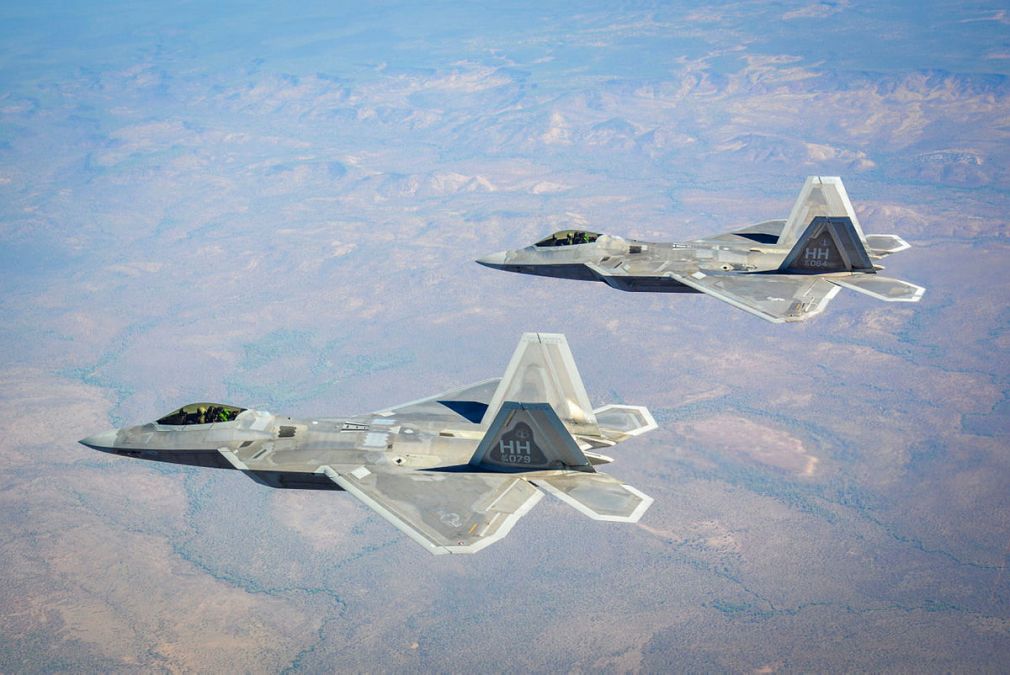More money for integration, less focus on platforms: Air Force officials preview themes of 2025 budget

Future budget requests made by the Department of the Air Force are likely to place greater emphasis on the capabilities needed to improve integration between the Air and Space Forces and the rest of the joint force, according to two senior officials.
Much of the focus for recent DAF investment plans has been on specific platforms and weapons, as well as how to balance current readiness goals and new modernization efforts, Acting Undersecretary of the Air Force Kristyn Jones said Wednesday during an event hosted by the Center for Strategic and International Studies. While that balance will likely remain a theme for fiscal 2025 and beyond, the department’s upcoming budget request will seek more funds for integration capabilities, she noted.
“Integration is one of the things that has been a focus for [fiscal 2025] and will ramp up even more with our great power competition efforts in [fiscal 2026] and out as we think about how to be better integrated,” Jones said. “Less platform focused, and more effects focused end-to-end — and how we integrate capabilities across air, space and with allies and partners in the joint environment.”
The DAF requested around $215.1 billion for fiscal 2024 — including $185.1 billion for the Air Force and $30 billion for the Space Force. The department is still waiting for a full-year spending bill from Congress for 2024 as it prepares to release its budget request for fiscal 2025 in the coming months.
Some of the Air Force’s biggest investment areas in its FY ’24 request included platforms like the Next Generation Air Dominance (NGAD) program, kick-starting work on Collaborative Combat Aircraft (CCA) and modernizing two legs of the nuclear triad. Meanwhile, the Space Force sought an increase in research-and-development dollars for its missile warning and missile-tracking programs and the Space Development Agency.
Part of the shift in priorities for future budget requests has been influenced by the new analysis made available for FY ’25, Lt. Gen. Richard Moore, deputy chief of staff for plans and programs, noted at the CSIS event. The department’s most recent budget was framed by analysis that mainly focused on those platforms and weapons needed to create effects, he said.
“However, the analysis that we’ve been able to do since then has matured and what we now have is the ability to look at … the very first sensing all the way to effects creation and all the things that it takes to link together,” Moore said.
The services have been working on integrating their systems, especially as the Pentagon continues to focus on Joint All-Domain Command and Control (JADC2). The warfighting concept seeks to provide commanders with the right decision-making data at a much faster pace than today, and the enabling technologies would connect platforms and weapons from all the services and key foreign partners across battlespace domains under a single network.
As an example, Moore highlighted work underway at the Air Force’s new program executive office for command, control, communications and battle management (C3BM) led by Brig. Gen. Luke Cropsey. In October, the office fielded an initial integration capability — cloud-based command and control (CBC2) — in New York at the Eastern Air Defense Sector under the North American Aerospace Defense Command.
“As these things become real and as our analysis matures, it gets to be really exciting — the kind of things that we can see from an integration perspective,” he said. “Unfortunately, it also tells us where the shortfalls are in our budget, and it tells us that we’re not as close to that as we would like to be.”
The type of analysis done for future DAF budget requests has been tightly linked across the Pentagon, Moore added. That way as they move forward with integration efforts, individual services can both reduce duplication of effort and understand how well they fight together, he said.
“It allows us to see that we are truly interdependent as a joint force, and I think you’ll see the results of that in our [FY ’25] budget when it gets released,” he said.






